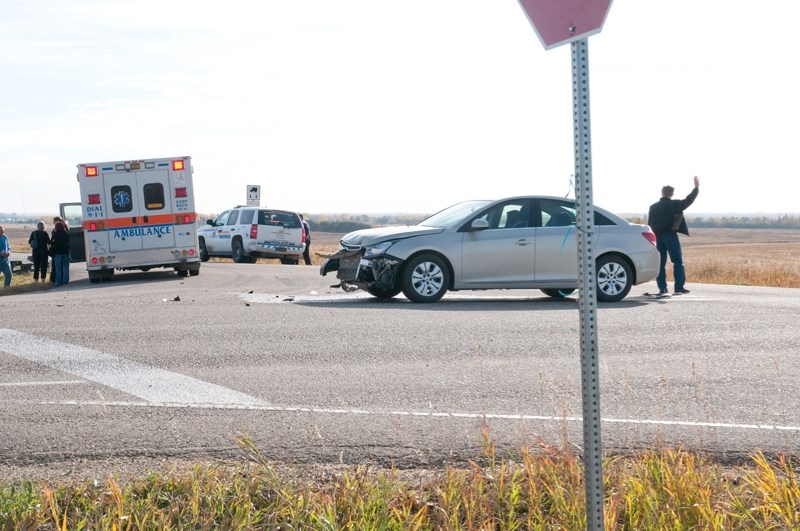The province's fatal vehicle collision statistics have been looking better in recent years, and area police say that, though hard to judge from year to year, their statistics have been generally dropping as well, though the degree varies from place to place.
The 2013 Traffic Collision Statistics show the overall fatality rate has continued on a downward trend, according to a recent government of Alberta press release.
While the numbers fluctuate from year to year, traffic fatalities have declined by 22 per cent since Alberta's first Traffic Safety Plan was introduced in 2007. The number of fatalities has dropped from 458 fatalities in 2007 to 358 in 2013.
There were a total of 141,638 collisions and 18,650 injuries on the roads last year – which is an increase of more than 5,000 collisions compared to 2012.
In the past year, the number of drivers has increased by 80,306 and the number of vehicles is up by 128,195. Traffic volumes on provincial highways have also jumped by 3.42 per cent.
The Sundre RCMP detachment's area has seen a decrease in the total number of collisions from last year to this year, from the period of Jan. 1 to Oct. 30, according to Cpl. Ryan Hodge
There were two collisions leading to fatalities this year, 22 non-fatal collisions leading to injuries, 172 reportable collisions with no injuries, and 14 non-reportable collisions, he said.
Last year for the same period there was one collision leading to a fatality, 29 non-fatal collisions leading to injuries, and 226 reportable collisions with no injuries.
Although some numbers changed little, he said that the reportable collision decrease of 50 incidents is somewhat significant.
“But that encompasses all our deer collisions, anyone off-roading that has a collision, so it's not just based on vehicle collisions based on driver habits. There's a large number of contributing factors to those numbers,” said Hodge.
For the Didsbury RCMP detachment's area, the numbers are fairly similar year to year, according to Cpl. Tina Millard.
This year so far, there have been four collisions leading to fatalities, 40 non-fatal collisions leading to injuries, 251 reportable collisions with no injuries, and 48 non-reportable collisions, she said.
Last year for the same period there were four collisions leading to fatalities, 37 non-fatal collisions leading to injuries, 249 reportable collisions with no injuries, and 51 non-reportable collisions, she added.
“So they're both about exactly the same for the same reported time. There's two accidents' difference. All the numbers are pretty much within those,” said Millard.
According to Olds RCMP detachment staff, this year Olds members have seen six collisions leading to fatalities, 32 non-fatal collisions leading to injuries, 406 reportable collisions with no injuries, 60 non-reportable collisions, and three off-road vehicle collisions causing property damage.
Last year for the same period, Olds RCMP dealt with two collisions leading to fatalities, 66 non-fatal collisions leading to injuries, 344 reportable collisions with no injuries, 56 non-reportable collisions, and two off-road vehicle collisions resulting in non-fatal injuries.
Minister of Transportation Wayne Drysdale said concerning the provincial statistics that drivers must take responsibility to play their part in ensuring safe roads.
“We recognize the challenges more drivers and vehicles present on our roads as our province continues to grow. But these numbers are further proof that all of us – and that means every Albertan – must take personal responsibility to ensure that others get home safely at the end of the day,” said Drysdale.
Since 2007, the government of Alberta has worked with its traffic safety partners to implement the Traffic Safety Plan, the first strategy of its kind in Canada. This critical work continues under Alberta's Traffic Safety Plan 2015.



